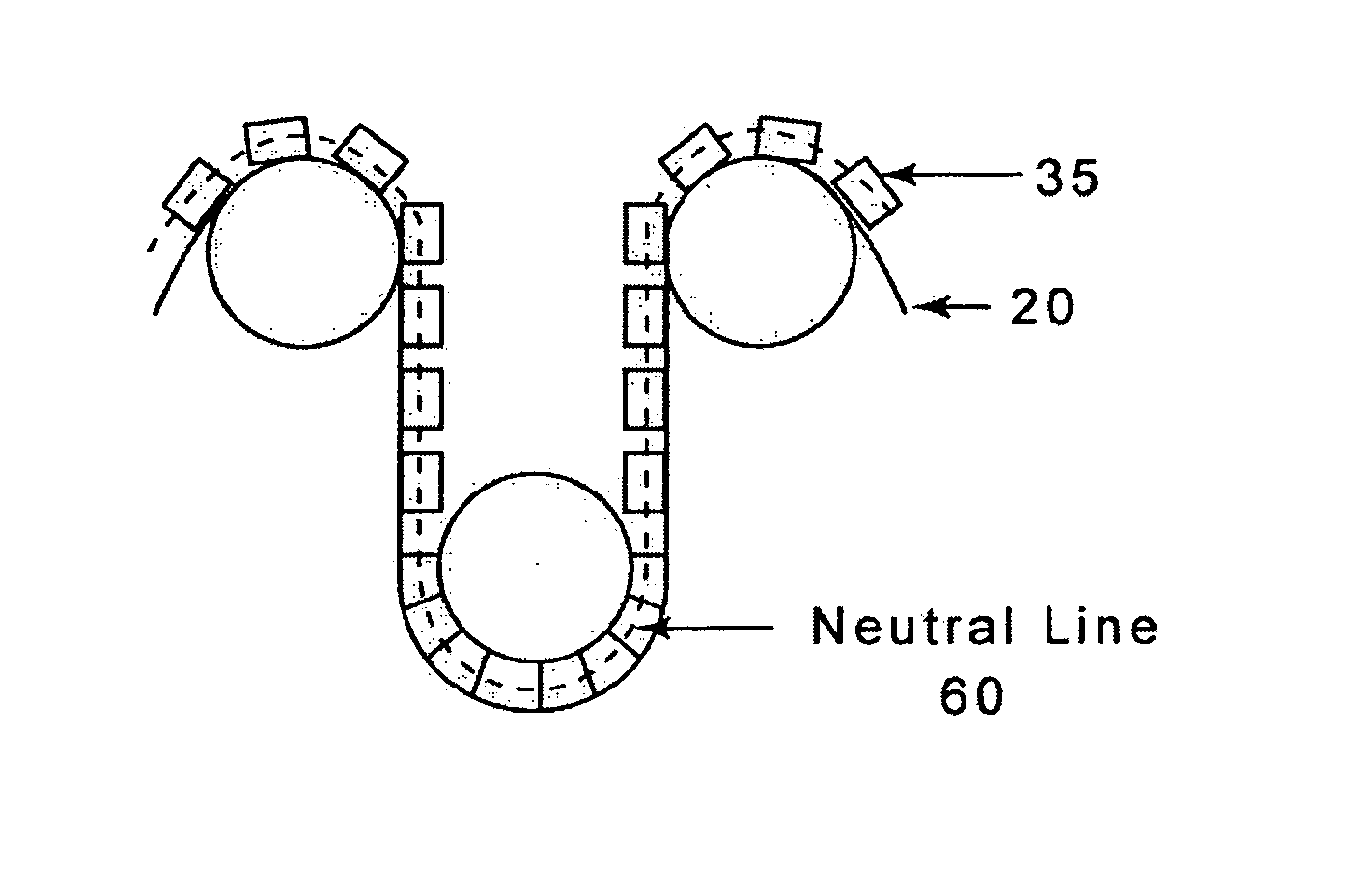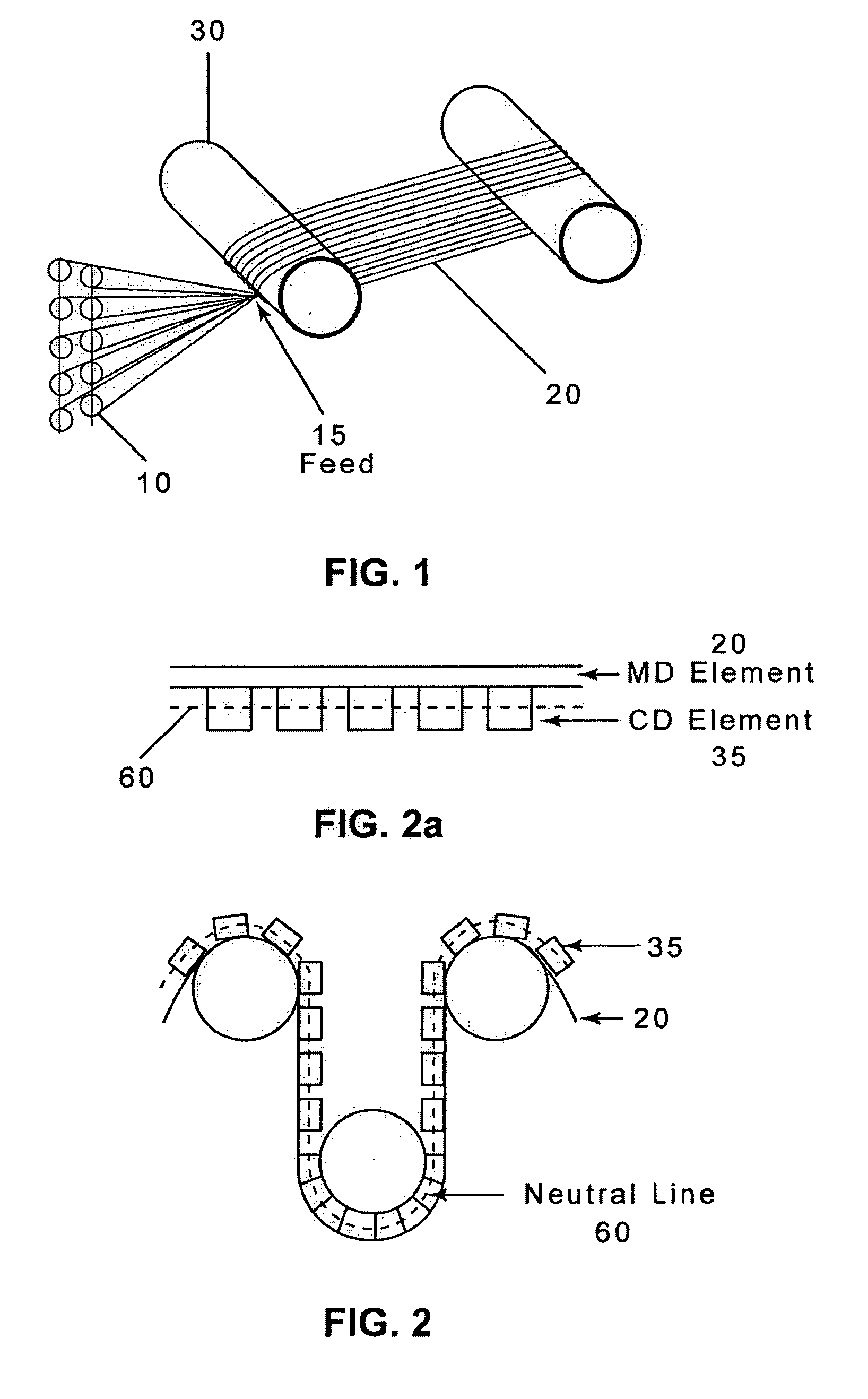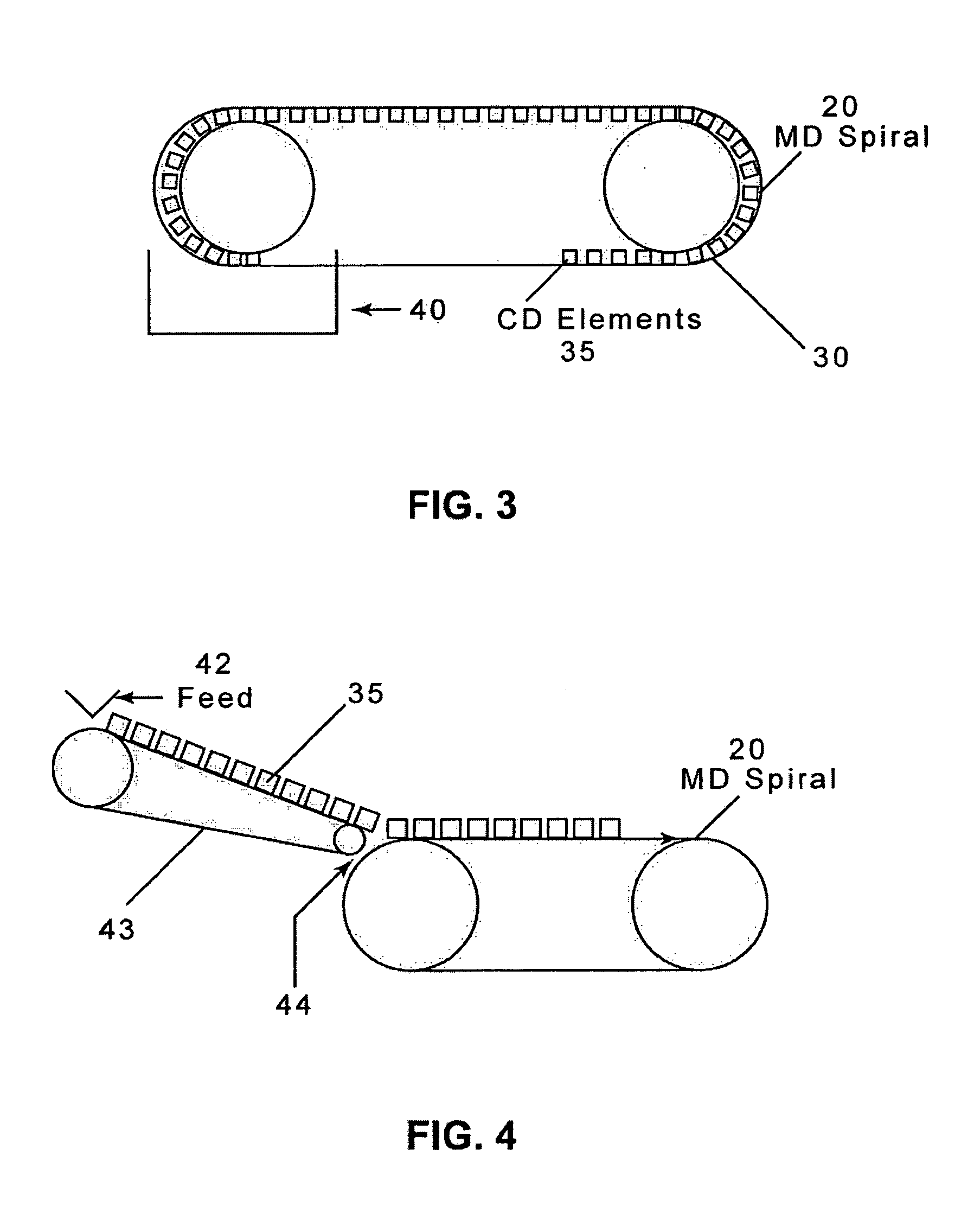Nonwoven neutral line dryer fabric
a dryer fabric and neutral line technology, applied in the field of papermaking arts, can solve the problems of reducing machine efficiency, reducing paper product quality, and high cost, and achieve the effect of reducing the stretching of the supported paper sheet and reducing the stretching of the paper sh
- Summary
- Abstract
- Description
- Claims
- Application Information
AI Technical Summary
Benefits of technology
Problems solved by technology
Method used
Image
Examples
Embodiment Construction
[0034]The present invention relates to a fabric produced for the dryer section of a paper machine that is produced as a nonwoven product using various different raw stock materials. The present fabric is an alternative to typical dryer fabrics which are woven using polymeric monofilament or multifilament yarns or spiral-link dryer fabrics.
[0035]Specifically, the present fabric has a spiral wound machine direction (MD) base layer of raw stock which is wound around two parallel cylinders until the desired length and width is achieved. This spiral winding technique is similar to that taught in the '656 patent—which is discussed above and is incorporated herein by reference—only the strips of woven material are replaced in the present invention with raw stock material elements. FIG. 1 is an exemplary setup for producing the spiral wound base layer of raw stock elements in accordance with the teachings of the present invention. As shown in FIG. 1, the raw stock material is fed via a deli...
PUM
| Property | Measurement | Unit |
|---|---|---|
| length | aaaaa | aaaaa |
| length | aaaaa | aaaaa |
| angle | aaaaa | aaaaa |
Abstract
Description
Claims
Application Information
 Login to View More
Login to View More - R&D
- Intellectual Property
- Life Sciences
- Materials
- Tech Scout
- Unparalleled Data Quality
- Higher Quality Content
- 60% Fewer Hallucinations
Browse by: Latest US Patents, China's latest patents, Technical Efficacy Thesaurus, Application Domain, Technology Topic, Popular Technical Reports.
© 2025 PatSnap. All rights reserved.Legal|Privacy policy|Modern Slavery Act Transparency Statement|Sitemap|About US| Contact US: help@patsnap.com



